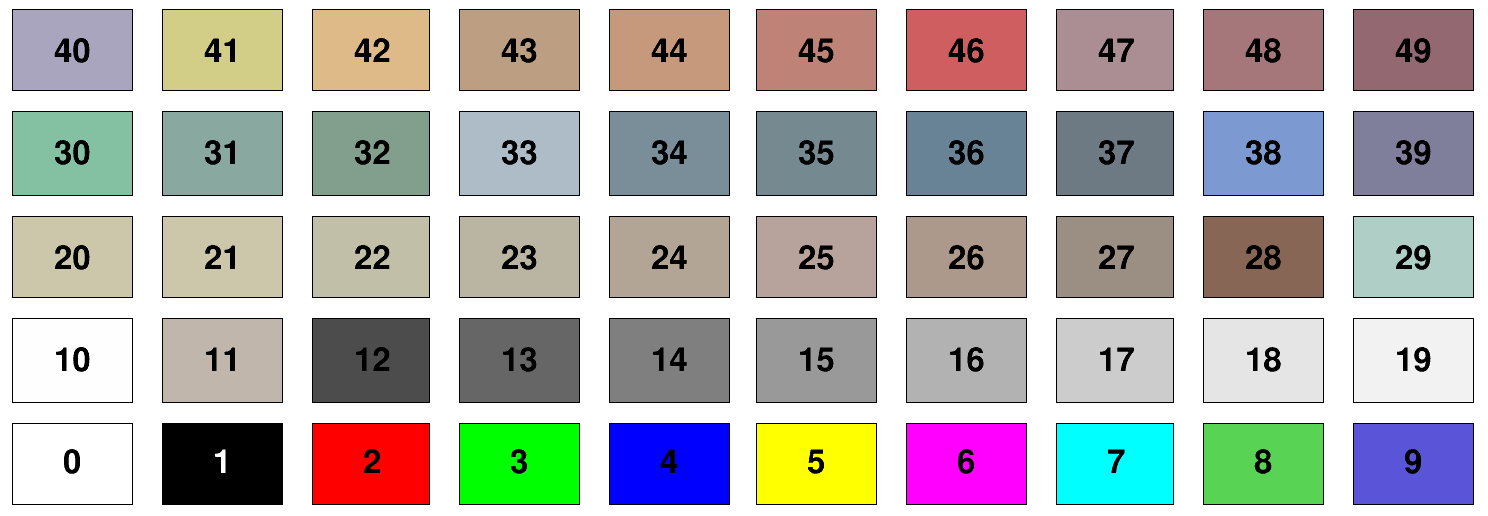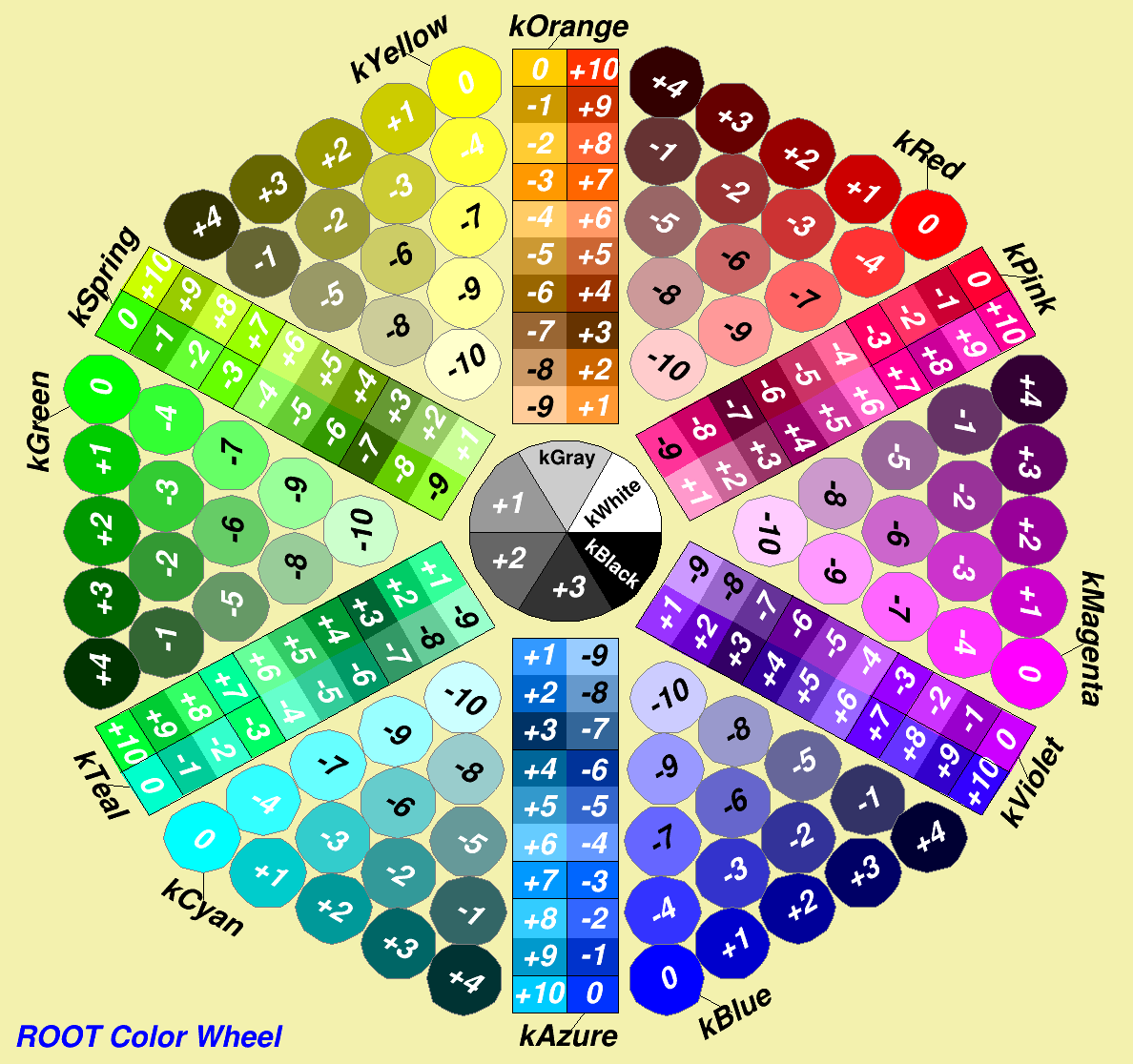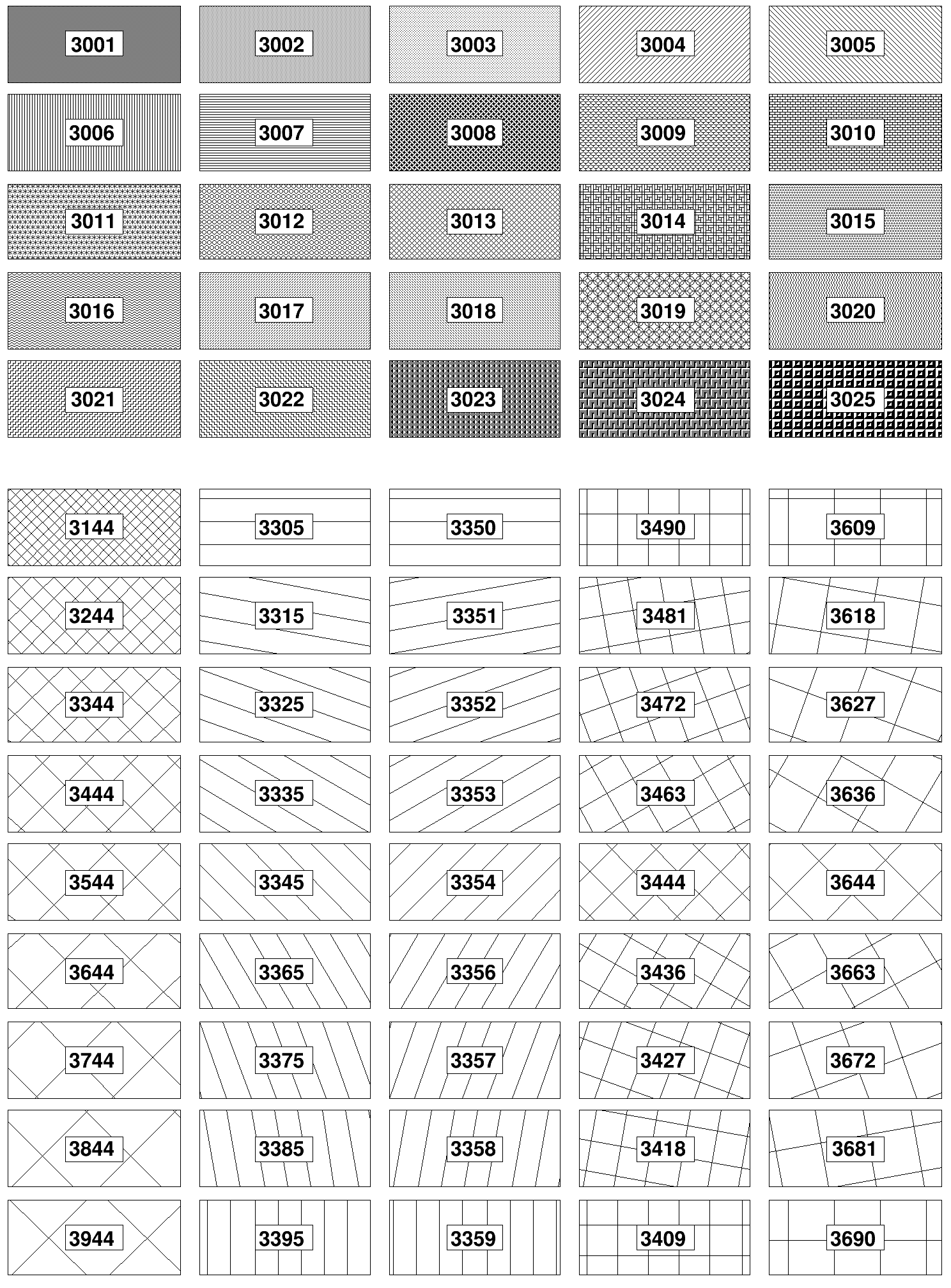 |
ROOT 6.16/01 Reference Guide |
 |
ROOT 6.16/01 Reference Guide |
Fill Area Attributes class.
This class is used (in general by secondary inheritance) by many other classes (graphics, histograms). It holds all the fill area attributes.
Fill Area attributes are:
The fill area color is a color index (integer) pointing in the ROOT color table. The fill area color of any class inheriting from TAttFill can be changed using the method SetFillColor and retrieved using the method GetFillColor. The following table shows the first 50 default colors.

SetFillColorAlpha(), allows to set a transparent color. In the following example the fill color of the histogram histo is set to blue with a transparency of 35%. The color kBlue itself remains fully opaque.
The transparency is available on all platforms when the flagOpenGL.CanvasPreferGL is set to 1 in $ROOTSYS/etc/system.rootrc, or on Mac with the Cocoa backend. On the file output it is visible with PDF, PNG, Gif, JPEG, SVG, TeX ... but not PostScript.
The wheel contains the recommended 216 colors to be used in web applications. The colors in the Color Wheel are created by TColor::CreateColorWheel.
Using this color set for your text, background or graphics will give your application a consistent appearance across different platforms and browsers.
Colors are grouped by hue, the aspect most important in human perception Touching color chips have the same hue, but with different brightness and vividness.
Colors of slightly different hues clash. If you intend to display colors of the same hue together, you should pick them from the same group.
Each color chip is identified by a mnemonic (eg kYellow) and a number. The keywords, kRed, kBlue, kYellow, kPink, etc are defined in the header file Rtypes.h that is included in all ROOT other header files. We strongly recommend to use these keywords in your code instead of hardcoded color numbers, eg:

If the current style fill area color is set to 0, then ROOT will force a black&white output for all objects with a fill area defined and independently of the object fill style.
The fill area style defines the pattern used to fill a polygon. The fill area style of any class inheriting from TAttFill can be changed using the method SetFillStyle and retrieved using the method GetFillStyle.
4000 to 4100 the window is 100% transparent to 100% opaque.
The pad transparency is visible in binary outputs files like gif, jpg, png etc .. but not in vector graphics output files like PS, PDF and SVG. This convention (fill style > 4000) is kept for backward compatibility. It is better to use the color transparency instead.
pattern_number can have any value from 1 to 25 (see table), or any value from 100 to 999. For the latest the numbering convention is the following:
The following table shows the list of pattern styles. The first table displays the 25 fixed patterns. They cannot be customized unlike the hatches displayed in the second table which be customized using:
gStyle->SetHatchesSpacing() to define the spacing between hatches.gStyle->SetHatchesLineWidth() to define the hatches line width.
Definition at line 19 of file TAttFill.h.
Public Member Functions | |
| TAttFill () | |
| AttFill default constructor. More... | |
| TAttFill (Color_t fcolor, Style_t fstyle) | |
| AttFill normal constructor. More... | |
| virtual | ~TAttFill () |
| AttFill destructor. More... | |
| void | Copy (TAttFill &attfill) const |
| Copy this fill attributes to a new TAttFill. More... | |
| virtual Color_t | GetFillColor () const |
| Return the fill area color. More... | |
| virtual Style_t | GetFillStyle () const |
| Return the fill area style. More... | |
| virtual Bool_t | IsTransparent () const |
| virtual void | Modify () |
| Change current fill area attributes if necessary. More... | |
| virtual void | ResetAttFill (Option_t *option="") |
| Reset this fill attributes to default values. More... | |
| virtual void | SaveFillAttributes (std::ostream &out, const char *name, Int_t coldef=1, Int_t stydef=1001) |
| Save fill attributes as C++ statement(s) on output stream out. More... | |
| virtual void | SetFillAttributes () |
| Invoke the DialogCanvas Fill attributes. More... | |
| virtual void | SetFillColor (Color_t fcolor) |
| Set the fill area color. More... | |
| virtual void | SetFillColorAlpha (Color_t fcolor, Float_t falpha) |
| Set a transparent fill color. More... | |
| virtual void | SetFillStyle (Style_t fstyle) |
| Set the fill area style. More... | |
Protected Attributes | |
| Color_t | fFillColor |
| Fill area color. More... | |
| Style_t | fFillStyle |
| Fill area style. More... | |
#include <TAttFill.h>
| TAttFill::TAttFill | ( | ) |
AttFill default constructor.
Default fill attributes are taking from the current style
Definition at line 173 of file TAttFill.cxx.
AttFill normal constructor.
Definition at line 185 of file TAttFill.cxx.
|
virtual |
AttFill destructor.
Definition at line 194 of file TAttFill.cxx.
Copy this fill attributes to a new TAttFill.
Definition at line 201 of file TAttFill.cxx.
|
inlinevirtual |
Return the fill area color.
Reimplemented in TGWin32VirtualXProxy.
Definition at line 30 of file TAttFill.h.
|
inlinevirtual |
Return the fill area style.
Reimplemented in TGWin32VirtualXProxy.
Definition at line 31 of file TAttFill.h.
|
inlinevirtual |
Reimplemented in TGWin32VirtualXProxy.
Definition at line 44 of file TAttFill.h.
|
virtual |
Change current fill area attributes if necessary.
Definition at line 210 of file TAttFill.cxx.
Reset this fill attributes to default values.
Reimplemented in TGWin32VirtualXProxy.
Definition at line 224 of file TAttFill.cxx.
|
virtual |
Save fill attributes as C++ statement(s) on output stream out.
Definition at line 233 of file TAttFill.cxx.
|
virtual |
Invoke the DialogCanvas Fill attributes.
Reimplemented in TGWin32VirtualXProxy.
Definition at line 250 of file TAttFill.cxx.
Set the fill area color.
Reimplemented in TVirtualX, TGQuartz, TGWin32, TGWin32VirtualXProxy, TGX11, TPDF, TPostScript, TSVG, TTeXDump, and TSpider.
Definition at line 37 of file TAttFill.h.
Set a transparent fill color.
falpha defines the percentage of the color opacity from 0. (fully transparent) to 1. (fully opaque).
Definition at line 259 of file TAttFill.cxx.
Set the fill area style.
Reimplemented in TPad, TSpider, TVirtualX, TGQuartz, TGWin32, TGWin32VirtualXProxy, and TGX11.
Definition at line 39 of file TAttFill.h.
|
protected |
Fill area color.
Definition at line 22 of file TAttFill.h.
|
protected |
Fill area style.
Definition at line 23 of file TAttFill.h.